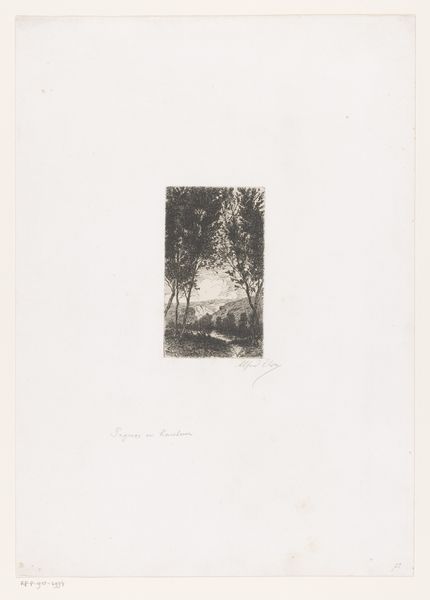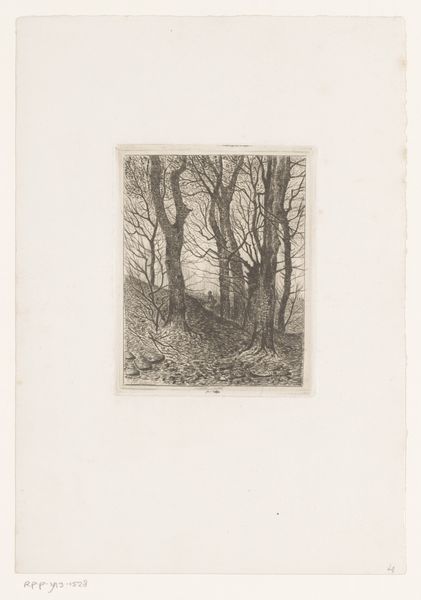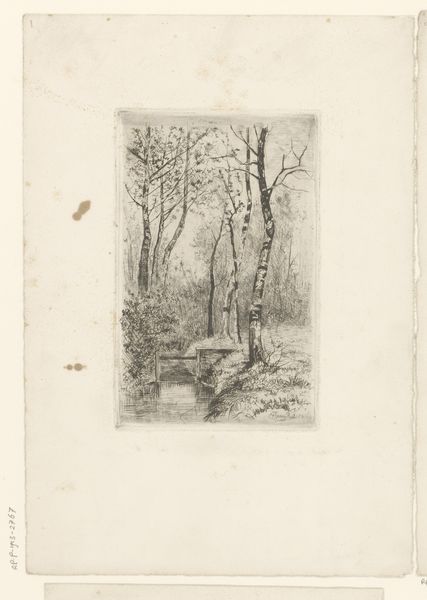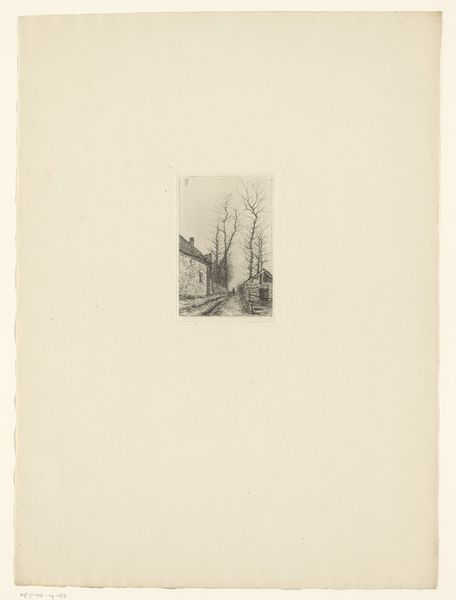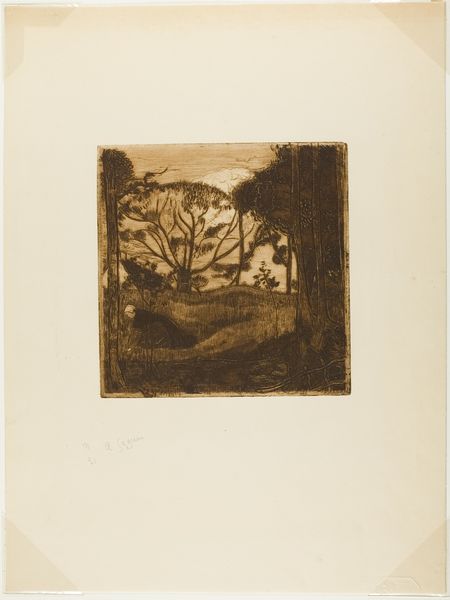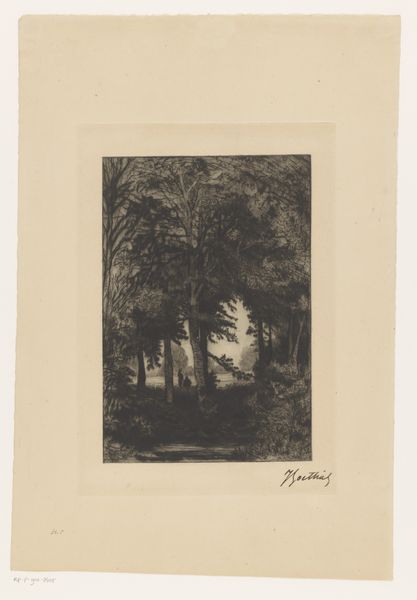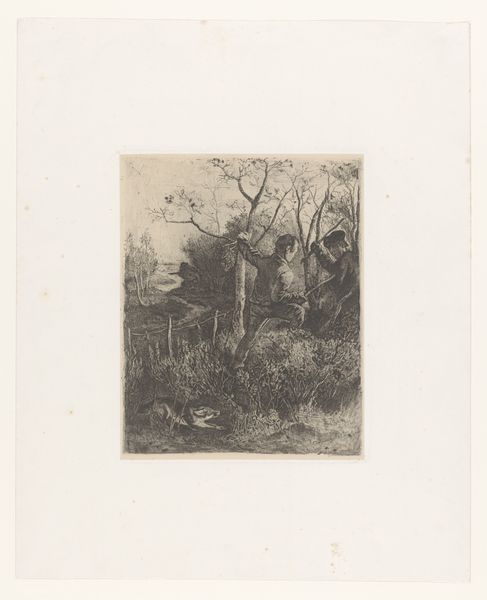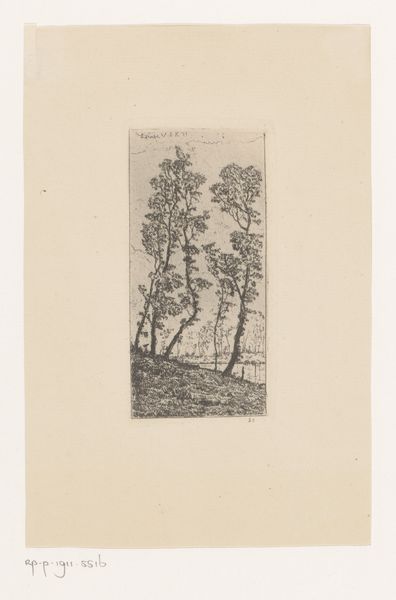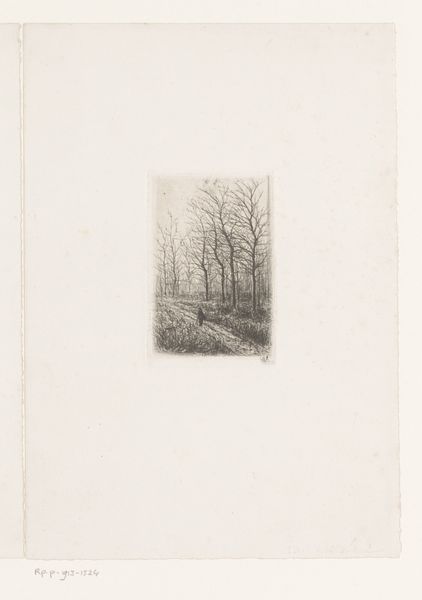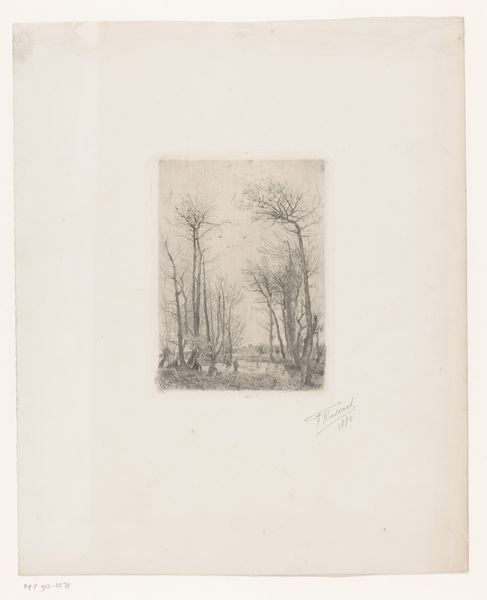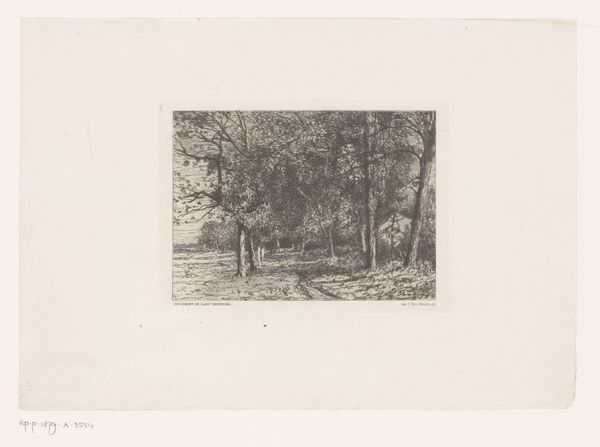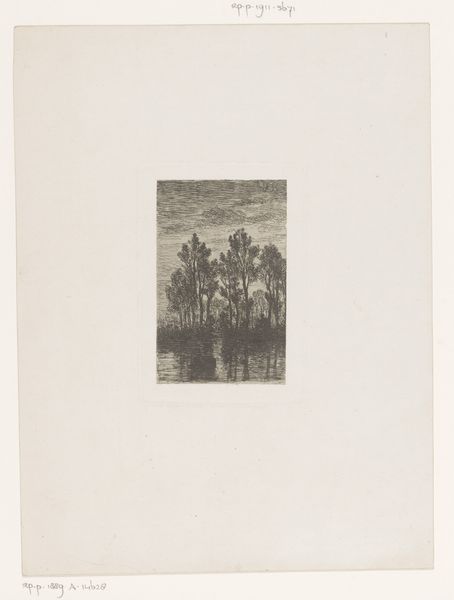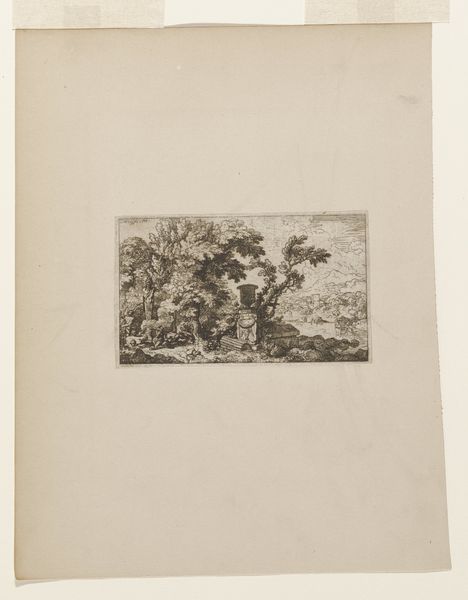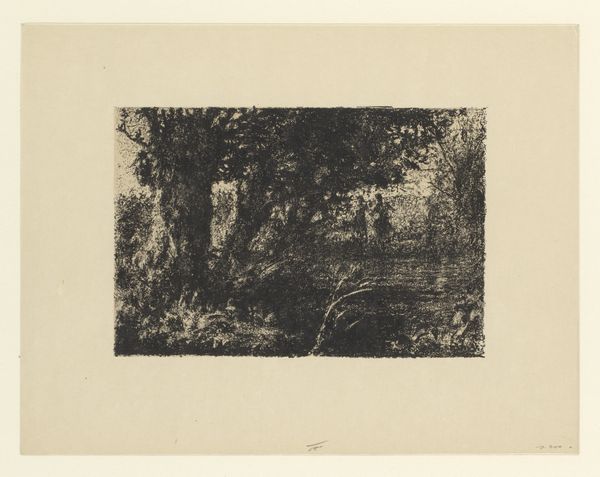
print, etching
# print
#
etching
#
landscape
#
realism
#
monochrome
Dimensions: height 128 mm, width 93 mm
Copyright: Rijks Museum: Open Domain
Curator: "Bosrand met een pad"—that is, "Edge of the Forest with a Path"—is the title of this etching by Jean Pierre François Lamorinière, likely created between 1838 and 1888. What strikes you about it? Editor: It's…melancholic. The monochrome palette and the almost skeletal trees give it a stark, haunting quality. It feels like a visual elegy for something lost. Curator: I think that reading resonates, especially if we consider the socio-political context. Lamorinière lived through a time of massive industrialization and urbanization. Images like these might reflect a longing for an idealized, perhaps even lost, relationship with the natural world, something increasingly impacted by capitalist exploitation. Editor: It's fascinating how such a seemingly simple landscape scene can carry so much symbolic weight. The path itself—does it suggest a journey? Perhaps a spiritual one, given the somewhat somber atmosphere? Or, in keeping with your analysis, is it more a trace of encroachment? Curator: Precisely. And paths have long served as visual symbols of human presence. They chart progress, both individual and societal. Consider how they might also highlight divisions and inequalities, indicating who has the right to access or traverse certain spaces. The 'edge' in the title already suggests some in-between space; this path may underscore that further. Editor: There is a potent liminality here, yes, both in terms of what the scene depicts and the symbolic nature of it all. I’m struck too by the trees as skeletal, stripped down, and yet still bearing the power to structure the whole composition. Curator: Well, looking at this from another angle: landscape art can often act as a powerful symbol of national identity, defining what it means to 'belong' or have access to specific territories. This could become contentious if, for instance, certain populations found themselves excluded from or misrepresented in these images. Editor: That's certainly worth remembering, that idyllic-seeming landscapes could often obfuscate land rights and power struggles in very deliberate ways. Thank you, that has really opened my eyes. Curator: And likewise for me! Reflecting on both historical symbolism and potential social readings adds invaluable depth to the interpretation of this work.
Comments
No comments
Be the first to comment and join the conversation on the ultimate creative platform.
